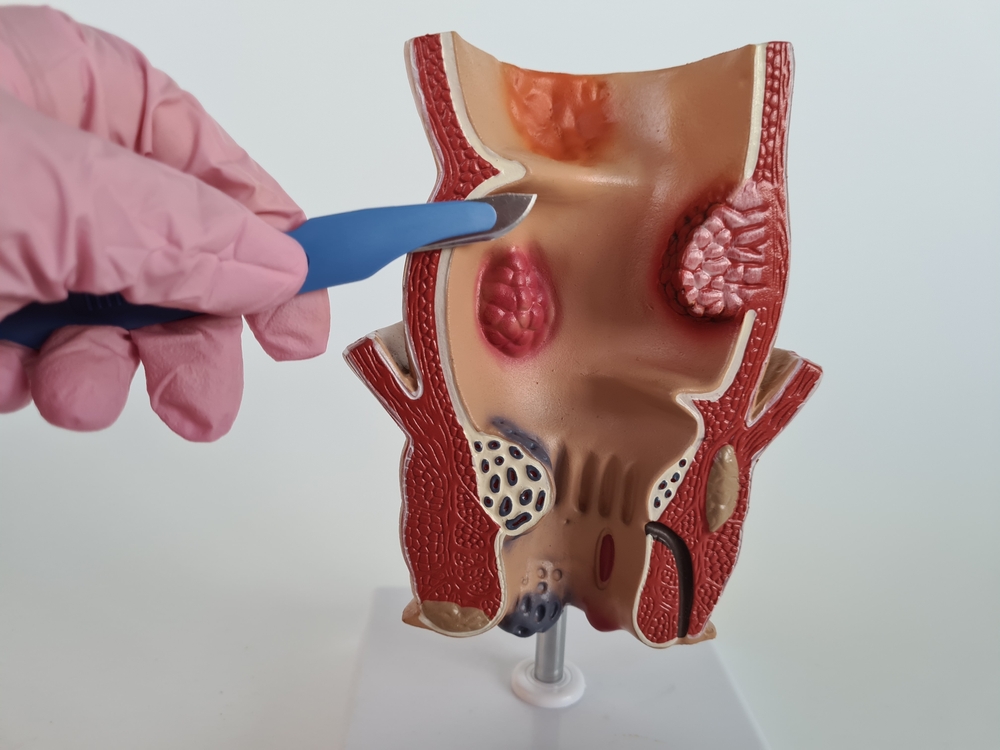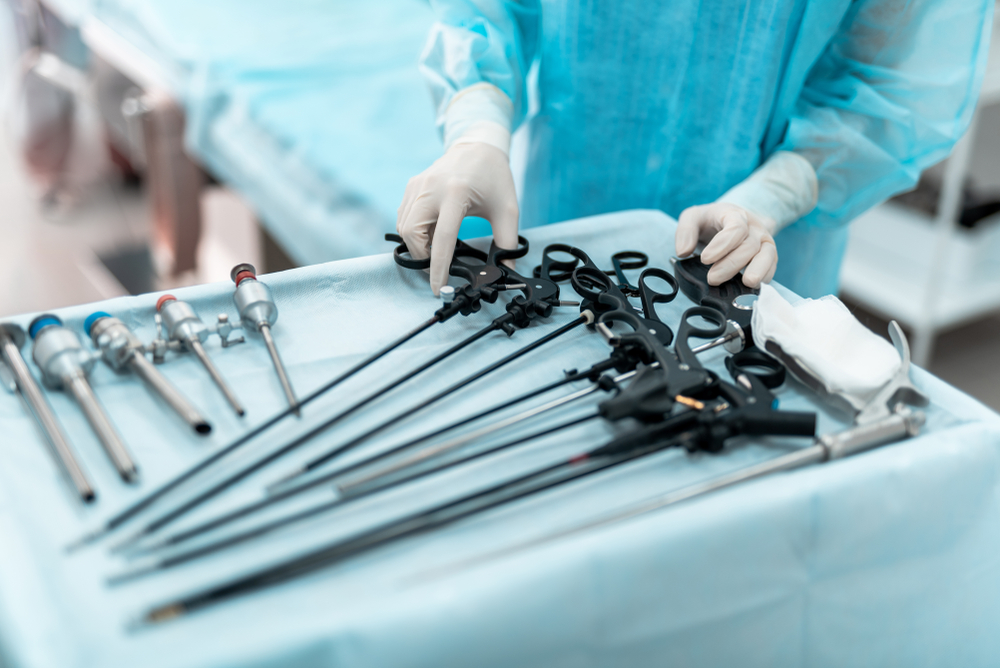Say Goodbye to Rectal Polyps – Get Back to Normal Life in Just 48 Hours!
Are you suffering from rectal polyps causing bleeding and discomfort? You’re not alone. Millions face this uncomfortable condition, but the good news is that modern minimally invasive treatment offers a quick, painless, and permanent solution without the fear of traditional surgery.
Our advanced rectal polyps removal is a minimally invasive outpatient procedure that allows you to return to your routine within 2-3 days—no cuts, no stitches, and no long hospital stays.
What Are Rectal Polyps?
Rectal polyps are abnormal tissue growths that develop on the lining of the rectum. They can vary in size and shape and may be benign or have the potential to become cancerous over time. If left untreated, they can severely affect your quality of life and daily activities.
Common Symptoms You Shouldn’t Ignore:
Rectal bleeding or blood in stool Change in bowel habits (diarrhea or constipation) Abdominal pain or cramping Mucus discharge from the rectum Anemia due to chronic bleeding Feeling of incomplete bowel evacuation Fatigue and weakness
If you’re experiencing any of these symptoms, it’s time to take action.
What Causes Rectal Polyps?
Rectal polyps develop due to abnormal cell growth in the rectal lining. Common causes include:
Age (risk increases after 50 years), Family history of polyps or colon cancer, Inflammatory bowel diseases (Crohn’s disease, ulcerative colitis,) Smoking and excessive alcohol consumption, Obesity and sedentary lifestyle, High-fat, low-fiber diet, Type 2 diabetes, Genetic conditions like Lynch syndrome or familial adenomatous polyposis
Types of Rectal Polyps We Treat
- Adenomatous Polyps
The most common type has with potential to become cancerous if left untreated over time. - Hyperplastic Polyps
Usually small and benign with a very low risk of cancer, commonly found in the rectum. - Inflammatory Polyps
Develop due to chronic inflammation from conditions like ulcerative colitis or Crohn’s disease. - Villous Adenomas
Larger polyps with a higher risk of containing cancerous cells require immediate removal.
Why Choose Minimally Invasive Removal Over Traditional Surgery?
| Traditional Surgery | Minimally Invasive Removal |
|---|---|
| Painful procedure | Virtually painless |
| Large cuts and stitches | No external cuts |
| 2-3 weeks recovery time | 2-3 days recovery |
| Risk of complications | Minimal risk |
| Hospital stay required | Same-day discharge |
| Visible scarring | No scarring |
| Extended discomfort | Minimal discomfort |
Minimally invasive removal is the modern, safer, and smarter choice for permanent relief.
How Does Rectal Polyps Removal Work?
Our advanced minimally invasive procedure is simple, safe, and highly effective:
Step-by-Step Process:
- Anesthesia: Sedation or local anesthesia is administered for your comfort
- Colonoscopy: A flexible tube with a camera is inserted through the anus to visualize the polyps
- Polyp Identification: The polyps are carefully identified and assessed
- Removal Technique: Polyps are removed using specialized instruments like snares or forceps
- No External Incisions: The entire procedure is done through the natural opening
- Quick Recovery: Patient is monitored briefly and discharged the same day
Duration: 30–45 minutes
Hospital Stay: None (Daycare procedure)
Pain Level: Minimal to none
Benefits of Minimally Invasive Rectal Polyps Removal
- Painless Procedure: Advanced technology ensures minimal discomfort during and after treatment.
- No External Cuts: Completely minimally invasive with no surgical wounds on the body.
- Same-Day Discharge: Return home within hours—no hospital admission required.
- Fast Recovery: Resume normal activities within 48 hours.
- Minimal Bleeding: Cauterization during removal reduces bleeding risk.
- Cancer Prevention: Early removal prevents potential progression to colorectal cancer.
- Accurate Diagnosis: Removed polyps are sent for biopsy to rule out cancer.
- No Dietary Restrictions: Return to your normal diet quickly after a brief period.
Post-Treatment Recovery & Care
Most patients experience a smooth and quick recovery. Here’s what to expect:
- First 24-48 Hours:
Mild discomfort or bloating (manageable with medication) Advised to rest and avoid strenuous activities - Week 1:
Gradual return to routine work Light walking is encouraged Soft, easily digestible diet initially - Week 2 Onwards:
Complete healing begins Follow-up visit and biopsy results discussion Long-term relief from polyp symptoms - Recovery Tips:
Drink 8-10 glasses of water daily Eat fiber-rich foods (fruits, vegetables, whole grains) Avoid heavy lifting for 1-2 weeks Monitor for any unusual bleeding or severe pain Follow prescribed medications and dietary guidelines
Why Choose Us for Rectal Polyps Removal?
- Advanced Technology: We use the latest endoscopic equipment for precise and safe polyp removal.
- Experienced Specialist: Our gastroenterologist has successfully treated hundreds of polyp cases with excellent outcomes.
- Safe & Hygienic Environment: State-of-the-art endoscopy suite with international hygiene standards.
- Patient-Centered Care: We understand your concerns and provide compassionate, confidential treatment.
- Complete Support: From consultation to post-operative care, we’re with you every step of the way.
- Fast & Convenient: Quick procedure with same-day discharge—minimal disruption to your life.
- Proven Results: High success rate with satisfied patients returning to pain-free living.
Frequently Asked Questions (FAQs)
- Is rectal polyps removal really painless?
Yes! The procedure is performed under sedation or anesthesia, and most patients report minimal to no pain during and after treatment. - How long does the polyp removal procedure take?
The actual procedure takes only 30-45 minutes. - Will I need to stay in the hospital?
No. Rectal polyps removal is a daycare procedure—you can go home the same day after a brief observation period. - When can I return to work?
Most patients return to their normal routine within 2-3 days. - Are there any side effects?
The procedure is very safe. Minor bloating or mild discomfort may occur, which resolves quickly. - Will the polyps come back after removal?
Some patients may develop new polyps over time, which is why regular follow-up colonoscopies are recommended. - What is the cost of rectal polyps removal?
Cost varies based on the number and size of polyps. Contact us for a personalized consultation and transparent pricing. - How often should I get screened after polyp removal?
Your doctor will recommend a follow-up schedule based on the type and number of polyps removed, typically every 3-5 years. - Is the treatment covered by insurance?
Many insurance plans cover rectal polyps removal. Please check with your provider or contact us for assistance. - What should I do if I experience bleeding after the procedure?
Mild spotting is normal, but if you experience heavy bleeding or severe pain, contact us immediately for consultation.
Don’t Let Rectal Polyps Control Your Life – Take Action Today!
Living with pain is not normal, and you don’t have to suffer in silence. Thousands have already experienced life-changing relief through our advanced polyp removal procedure.
Take the First Step Towards a Pain-Free Life!
Your comfort and health are our priority. Schedule your consultation today and experience the difference modern medical technology can make.


